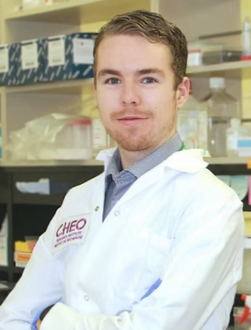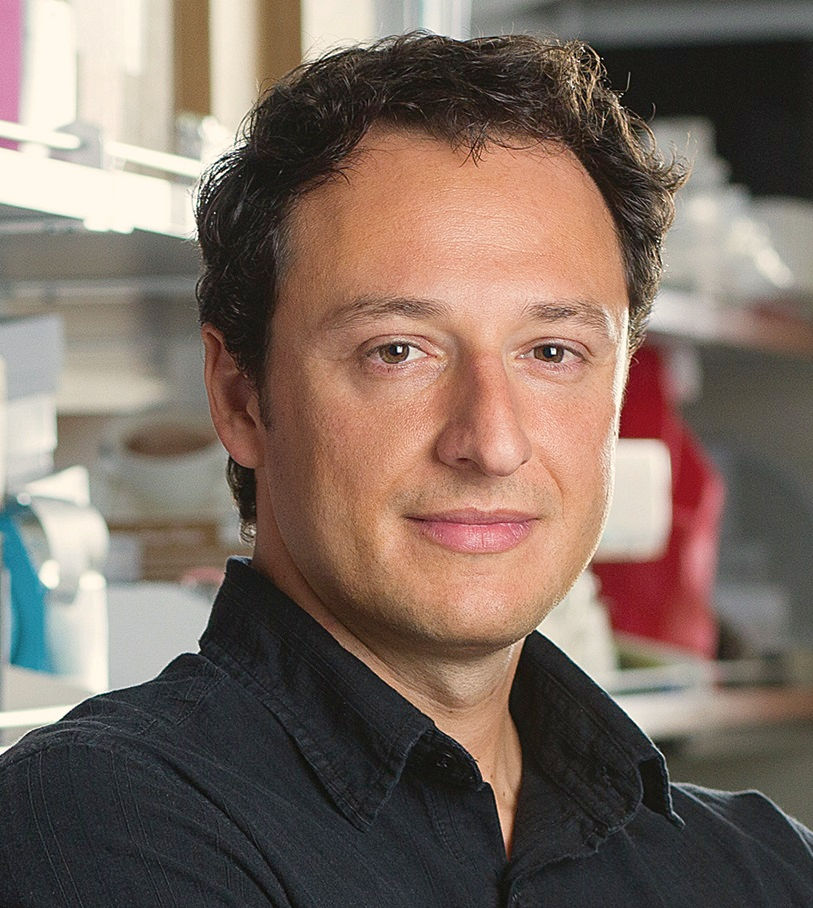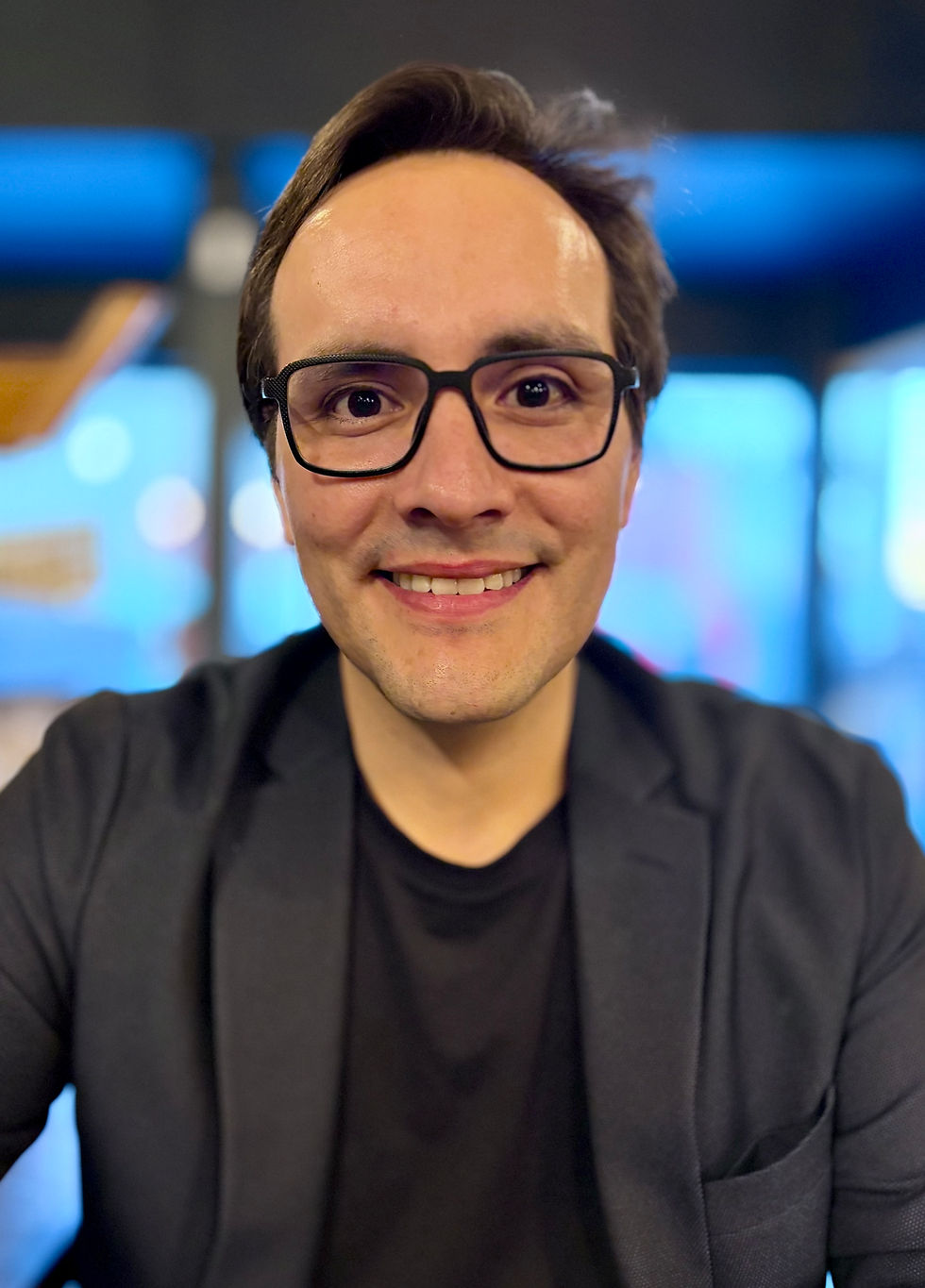2025 Conference Presenters
Alexandre White-Brown, MS

Children's Hospital of Eastern Ontario
Genetics 101: Understanding DLG4-SHINE Syndrome
This session will introduce the basics of genetics to help families better understand DLG4-SHINE syndrome. The goal is to empower families with knowledge about how genes work, what happens when they change, and how this relates to their loved one’s diagnosis.
Alexandre White-Brown is a clinical and research Genetic Counsellor at the Children’s Hospital of Eastern Ontario in Canada. His research interests focus on the use of novel technologies and electronic medical records for the identification and diagnosis of rare genetic diseases. Alexandre has volunteered on the Medical Advisory Board of the DLG4-SHINE Foundation since its conception and has several years of experience providing respite care for a child with DLG4-SHINE Syndrome.
Alex MacKenzie, MD
.jpg)
Children’s Hospital of Eastern Ontario
Q & A Panel Moderator
Alex MacKenzie is an attending pediatrician at the Children’s Hospital of Eastern Ontario in Ottawa, Canada and Professor of Pediatrics at University of Ottawa. Dr. MacKenzie’s laboratory conducts translational research on therapies for rare genetic diseases including SHINE syndrome.
Zeynep Tümer, MD

Copenhagen University Hospital – Rigshospitalet
Disease mechanism, clinical outcome and the path forward
PSD-95, the protein encoded by the DLG4 gene, plays a key role in the normal function of synapses—the communication points between nerve cells in the brain. Our goal is to understand how changes in this gene affect the function of the protein and lead to the symptoms seen in individuals. We are also working to understand the disease progression from childhood through adulthood.
Dr. Zeynep Tumer is a medical doctor based at the Copenhagen University Hospital – Rigshospitalet and holds a professorship at the University of Copenhagen. Her daily work includes teaching and supervising, genetic diagnostics, and research. For over 25 years, she has been working on uncovering the molecular mechanisms underlying rare neurodevelopmental disorders.
Thomas Dye, MD

Cincinnati Children’s Hospital Medical Center
An Introduction to Sleep in Neurodevelopmental Disorders
This talk will explore the ways in which sleep is regulated and how neurodevelopmental disorders may lead to sleep disruption. We will discuss the ways in which sleep can be evaluated as well as the general categories of therapeutic options for sleep disorders.
Thomas J. Dye, MD, FAASM is a child neurologist and sleep medicine specialist at Cincinnati Children's Hospital Medical Center. Clinically, he focuses on the treatment of pediatric sleep disorders, particularly in children with neurodevelopmental disorders. His research focuses on the evaluation of therapeutic options for treating sleep related movement disorders and the assessment of electrophysiologic markers of sleep and circadian disorders.
Katina Calakos, PhD

Staff Scientist, Boston Children's Hospital
Simons Searchlight Registry Update
Katina Calakos is a Staff Scientist at Boston Children’s Hospital and research team member of the Simons Searchlight cohort study on rare genetic neurodevelopmental disorders. She manages the collection and distribution of Simons Searchlight clinical data for both researchers who access and analyze the data, and for participating families who receive data summaries with clinical insights. Prior to joining Simons Searchlight, she spent over a decade conducting research studies on the neuroscience of fear learning as an undergraduate, of age-related cognitive decline as a post-baccalaureate research assistant, and of substance use disorders as a graduate scientist. She earned her B.A. in Neuroscience & Behavior at Barnard College and her Ph.D. in Neuroscience at Yale University.
Sharon Tamir, MD-PhD Candidate

Cincinnati Children’s HospitalMedical Center
Novel Mouse Model of SHINE Syndrome and What it Can Teach Us
A presentation on sleep and circadian rhythm disruption in SHINE Syndrome.
Sharon Tamir is an MD-PhD student at the University of Cincinnati College of Medicine and Cincinnati Children’s Hospital, where she is training to become a physician-scientist focused on pediatric neurological disorders. Sharon is currently pursuing her PhD in the lab of Dr. John Hogenesch, where her research investigates sleep and circadian rhythm disturbances in SHINE syndrome using a mouse model with a patient-derived DLG4 mutation. She has authored peer-reviewed papers on neurodevelopmental sleep disorders and has presented her work nationally, including at the 2024 Society for Research on Biological Rhythms conference.
Parul Varma, PhD

The University of Texas at San Antonio
Developing patient derived in vitro neuronal models for DLG4-associated rare brain disorder
Our research focuses on understanding patient specific cellular, molecular and electrophysiological mechanisms underlying DLG4 mutations paving the way for development of novel therapeutic strategies.
Dr. Parul Varma is an Assistant Professor of Research at The University of Texas at San Antonio, where her work focuses on investigating neurodevelopmental disorders linked to rare genetic mutations. She is deeply committed to utilizing patient-derived stem cells differentiated into 2D/3D neuronal models, alongside molecular biology techniques and computational approaches to uncover the underlying mechanisms of these disorders and ultimately contribute to the development of therapeutic interventions in the future.
Luisa Coelho, MS

University of California San Diego
Development Brain Organoids as a Model to Study DLG4 Synaptopathy
This talk will introduce the stem cell-derived brain organoid model and its unique capacity to recapitulate the neuronal architecture of the human brain. We will then explore how this model is being used to uncover disease-relevant phenotypes associated with patient-specific mutations in the DLG4 gene.
Luisa Coelho is a Research Associate at the Muotri Lab, University of California San Diego, specializing in Stem Cell Biology and brain organoid culture. With over eight years of experience in the field, Luisa has contributed extensively to the development and application of brain organoids as translational models for neurological disorders such as Alzheimer's Disease, Rett Syndrome and DLG4 Syndrome. Her master’s work focused on optimizing automated platforms for organoid culture, and she continues to push the boundaries of the field through her involvement in cutting-edge space biology research. As part of the Muotri Lab’s space initiative, Luisa is helping lead efforts to send brain organoids to the International Space Station to investigate the effects of microgravity and cosmic radiation on the human brain, with the long-term goal of harnessing the accelerated aging induced by spaceflight to improve disease modeling. Her current work explores brain organoids as a model to study DLG4 synaptopathy, advancing our understanding of synaptic dysfunction in neurodevelopmental disease.
Alysson Muotri, PhD

University of California San Diego
Development and testing of an AAV9 vector gene therapy
In this talk, Dr. Alysson Muotri will present the development and preclinical testing of an AAV9 vector gene therapy targeting DLG4 Synaptopathy. The approach leverages advanced brain organoid models to assess the therapeutic potential of gene therapy for this disorder. This work aims to lay the foundation for future clinical translation and treatment strategies for individuals affected by DLG4 variants.
Alysson Muotri, Ph.D., is a renowned scientist specializing in the creation of brain organoids—miniature brain-like structures developed from stem cells. His innovative work aims to accelerate the discovery of effective treatments for conditions like Alzheimer's, cancer, and autism by enabling faster and more predictive drug testing. Dr. Muotri is a Professor at UC San Diego, where he has held several leadership roles, including Director of the Gene Therapy Initiative, Director of the ISSCOR Center, and Director of the UCSD Stem Cell Program. With nearly two decades at UCSD, his interdisciplinary work bridges stem cell research, neuroscience, space biology, and anthropogeny.
Rami I Aqelian, PhD

Hebrew University
Development and testing of an AAV9 vector gene therapy
Our work demonstrates effective overexpression of PSD-95 using AAV9-hSyn-hDLG4 in both mouse brains and patient-derived neurons and cerebral organoids. Importantly, AAV9-mediated DLG4 delivery restores molecular and functional deficits in DLG4 mutant neuronal models, including normalization of synaptic protein levels and rescue of aberrant electrophysiological activity in cerebral organoids.
Rami I. Aqeilan, PhD, is the Jacob M. Eisenberg and Thomas W. Baylek Chair for Medical Research in the Field of Genetic Engineering and a Professor of Immunology and Cancer Research at the Lautenberg Center, Hebrew University. His research focuses on the molecular mechanisms of genome stability, tumor suppression, and the roles of WWOX and related genes in cancer and neurodevelopmental disorders. His lab has made pioneering contributions to understanding WWOX-associated epileptic encephalopathies, highlighting novel therapeutic targets. Dr. Aqeilan is internationally recognized for bridging cancer biology and neurogenetics through innovative gene function and translational studies.
Gerardo Medina, PhD

Children's Hospital of Eastern Ontario
Restoring Synaptic Integrity in SHINE Syndrome: Insights from a Targeted Drug Repurposing Screen
This presentation will describe the results of a drug repurposing screen aimed at identifying FDA-approved compounds that can enhance synaptic protein expression in SH-SY5Y neurons, focusing on PSD-95 restoration in DLG4-related SHINE syndrome. Among 18 candidates, DHA showed the most robust increase in PSD-95 levels and was further validated in pathway studies, revealing its PI3K/Akt-dependent effects on postsynaptic markers. These findings support DHA's potential as a targeted intervention for SHINE and lay the groundwork for the upcoming clinical evaluation.
Gerardo Medina is a research associate at the CHEO Research Institute in Ottawa, Canada, working in Dr. Alex MacKenzie's laboratory. His research focuses on identifying and validating repurposed therapies for SHINE syndrome. His recent work investigates DHA as a potential treatment, following a screen of FDA-approved compounds to restore PSD-95 expression in DLG4-related neuronal models.
Kim Le, PhD

Neurophase Therapeutics Copenhagen
Biomolecular condensates - a novel drug target for treating Neurodevelopmental disorders
Key player proteins located at the postsynapse of excitatory neurons such as PSD-95 and SynGAP are organized in biomolecular condensates, and their function is highly dependent on a phenomenon known as liquid-liquid phase separation. Pathogenic changes in the PSD95 protein can alter phase separation properties and might be an underlying cause for irregular brain function. Neurophase Therapeutics uses a peptide-based drug discovery approach to restore protein complexes to their healthy state.
Kim Le, Ph.D. is a neurobiologist with academic training in Germany. Her research on Neurodevelopmental disorders during her PhD focused on sensory processing aspects. She is now a researcher at the BioInnovation Institute in Copenhagen at Neurophase Therapeutics.
